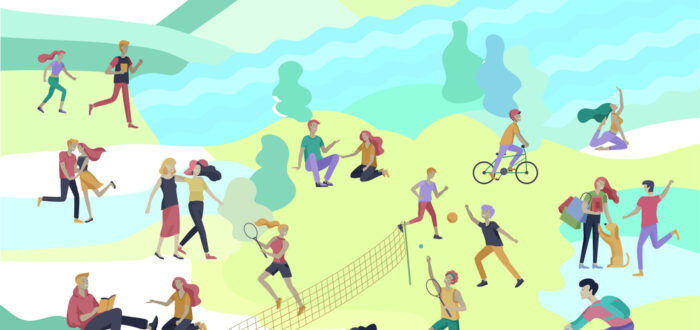Autumn is a season of vibrant colors, crisp air, and a plethora of outdoor activities. From hiking through the foliage to attending harvest festivals, there’s no shortage of adventures to be had.
However, amidst all the fun, it’s essential to remember one crucial aspect: protecting your hearing. Here’s how you can enjoy the best of autumn while ensuring your ears remain safe.
The Sound of Autumn: Why Protecting Your Hearing Matters
Autumn brings with it a unique blend of sounds: rustling leaves, distant bonfires, and the occasional gust of wind. While these are soothing, other seasonal noises can be harmful to our ears. Activities like hunting, attending loud concerts, or even being near noisy machinery during harvest can expose our ears to dangerous levels of sound.
Prolonged exposure to loud noises can lead to tinnitus or even permanent hearing loss. Hence, it’s vital to be proactive in safeguarding our hearing.
Tips for Protecting Your Hearing During Outdoor Activities
If you’re heading outdoors this autumn, protect your hearing with these tips:
- Earplugs are Essential: Whether you’re attending a live concert or participating in a shooting sport, always have a pair of earplugs handy. They reduce noise levels and protect your ears from potential harm.
- Limit Exposure: If you’re around loud noises, try to take regular breaks. Every 15 minutes away from a loud environment can help reduce the risk of hearing damage.
- Distance is Your Friend: The further you are from the source of a loud noise, the better. If you’re at an event with amplified sound, don’t stand next to the speakers.
- Opt for Noise-Canceling Headphones: If you enjoy listening to music during your autumn hikes or jogs, choose noise-canceling headphones. They allow you to listen at a lower volume, reducing the risk of hearing damage.
Activities to Enjoy Without Compromising on Hearing Safety
There’s plenty to enjoy outside that doesn’t pose a risk to your hearing. Why not opt for some hearing-friendly activities this autumn, such as those below:
- Nature Walks: The soft sounds of nature are not only safe for your ears but also incredibly therapeutic. And in Idaho, we are lucky to have some truly incredible mountains, deserts, forests and canyons to explore. Check out just a few of the activities available in our beautiful state on the Visit Idaho website.
- Picnics: Gather your loved ones and enjoy a serene picnic in an open area. The natural ambiance of autumn, combined with soft conversation, is perfect for your ears.
- Bird Watching: Autumn is a great time for bird watching. The activity is quiet, peaceful, and offers a chance to listen to the gentle calls of migrating birds. Northern and central Idaho boasts a variety of habitats that are perfect for autumn bird watching. Harlequin Duck, Blue Grouse, Northern Pygmy and Boreal Owls are just a few of the bird species you could spot.
Autumn is a season to be enjoyed to the fullest. By taking simple precautions, you can immerse yourself in all the outdoor adventures it offers without compromising on your hearing health. So, as you step out to embrace the golden hues and cool breezes, remember to keep your ears safe and sound. Happy adventuring!
Need Help? Have a Question? Contact Us Today!
At the Regional Hearing & Balance Center, your health and well-being are our top priority. If you have more questions or concerns about the compatibility of hearing aids with pacemakers or any other hearing-related matters, don’t hesitate to reach out to our expert team. Call us at 208-497-3596 or click here to book a complimentary hearing assessment.


Recent Comments